Business Cards
Business cards are networking essentials. No matter where you go, don’t leave home without them. You don’t have to be in business, or even have a job, to have a business card. It’s just as important for a graduate seeking a first job to carry a card as it is for a senior VP looking for the next big thing. A business card reminds people who you are and what business you’re in, and it conveys your professionalism. Most important, it contains all your vital contact information in one convenient place. If you’re employed and have cards but are looking to do something entirely different, you may want to print another set of cards that reflect your new area of interest.
By giving your card to contacts, you are indirectly introducing yourself to the people they in turn meet. You give someone a card at a barbecue. Then he meets someone the following week who is looking for someone with your skills. He passes along your card. Bingo, instant gratification! Because the new contact has your card, you can be sure she has all your information. You’ve provided your phone number, current email address, and line of work.
In particular, if you’re going to a conference, traveling abroad, or attending any formal function, you risk appearing unprofessional if you neglect to bring business cards. Just make a habit of toting a few cards with you everywhere you go, including cafés, restaurants, parties, concerts, and gallery openings. You never know where you might meet someone who shares your interests, strikes you as an intriguing person, or is a potentially useful contact—or knows someone who is.
Business cards are the leave-behinds people will have to remember you by, so you should make them distinctive and provide as much contact info as possible. If you have some cash, you can get slick business cards designed and printed by a fancy letterpress printer, graphic design studio, or silk screener. On a moderate budget, an independent graphic designer or a printer can still make your cards look sharp. If you have less to spend, design and print them yourself at home or at your local Kinko’s. Google “business cards” and you’ll find all sorts of bargain offers for cards in various templates: 250 cards for $5.99, and even color cards for free (except for processing and printing costs). The bottom line is, you can get respectable cards on any budget.
But don’t wait around for the perfect business card. One nonprofit professional was caught between business cards when he left his position for grad school. It didn’t occur to him to have a business card with his school email address and cell phone number. He met a great contact in his field at a party and ended up writing his number on a scrap of paper. The contact promptly stuffed the paper into his jeans pocket—and the paper was now fated for the wash. Don’t let this happen to you!
An email signature is a sign-off that automatically appears at the bottom of every email you send. Almost all email services provide this feature. You should take advantage of it to ensure that your relevant contact information—accurate and typo-free, every time—is included whenever you email anyone. Also, you should never assume that someone you have previously contacted still has your information. People are disorganized, lose stuff, get new computers with blank address books, and so on.
As a rule, avoid personalized touches that may serve to undermine your professionalism. Don’t include overtly political or religious messages that could turn someone off. A randomly generated philosophical quote might seem harmless enough, but someone may take offense to your pithy quote from George Bernard Shaw. That would be a silly way to lose a valuable contact. Even something as innocuous as a show of support for your favorite team can cause trouble when the query you send to Thomas Leaping horse, director of Web development, ends with an emphatic “Go Redskins!”
The bottom line is, keep it simple and straightforward: name, title, phone number, email, fax number if you have one, and maybe a mailing address. You can add your personal touches in the body of your message or when you get together face-to-face.
DateBook
Since you’ll soon be networking a lot, you’ll need a datebook to ensure you don’t schedule conflicting appointments. Keeping a datebook handy is a wise networking idea. That way, when someone at a baseball game or parent-teacher meeting suggests lunch, you can make plans. Having your calendar on hand also allows you to reschedule on the spot without having to play phone tag. The point is to have a calendar that’s portable and convenient enough that you can and will check it every day.
Wardrobe
Adding a little of your own personality to your business-casual ensemble may not be a bad idea, particularly if it boosts your confidence. One woman swears by a lucky wrap she wears, saying it makes her feel more memorable and comfortable. But the point is that you want people to remember you, not your outrageous getup.
Make sure your clothing is clean and not too revealing. Also, take it easy on the perfume or aftershave. You don’t want a heavy scent or a slovenly appearance to distract people from your brilliant insights.
Work Samples
You probably won’t want to take these out should you meet a potential contact at a friend’s dinner party. That said, some enterprising entrepreneurs carry work samples everywhere, ready to display them at the slightest provocation—and it’s benefited them.
You should have work samples ready for a lunch meeting, but don’t pull them out unless it’s appropriate to do so. Also, there’s no need to show someone examples of your design work if you’re trying to move into human resources. Recent is better. But you can dust off a few golden oldies if you must.
Your work samples should illustrate what an asset you can be, so don’t just fire them off by email without explanation. Make sure you include a brief story (three sentences max) about the problem your project was intended to solve and how it met or exceeded expectations. Naturally, you should prepare your story. (You knew we were going to say that, didn’t you?)
The kind of job you’re after will determine how you choose to present your samples. If you’re hoping to write white papers for the technology industry, you don’t need to create a leather-bound portfolio inside a handmade mahogany case. Black-and-white printouts neatly placed in an acetate-sleeved folder from your local office supply store will do just fine. On the other hand, if you’re trying to land a job as a graphic designer, presentation is everything: The papers and print quality should be high-end. Your portfolio case itself may make a statement. We’ve known advertising art directors who have built that aforementioned wooden case, while others have featured materials from vinyl to steel to fuzzy purple fur. Just be sure that the presentation is appropriate for the contact who’s reviewing your work, and that gimmicky stuff doesn’t speak louder than the work itself.
Resume
You don’t need a perfectly polished resume to network; that’s the oldest procrastination excuse in the book! But your resume should be neatly organized and easy to read. It should clearly convey your relevant work and personal history. Also, you should be tailoring your resume to the demands of each job. There really is no such thing as the ideal one-size-fits-all resume.
Keep in mind, you may seem a little forward by bringing your resume to a lunch meeting, unless you’ve asked your contact in advance if he or she would be willing to give you some tips for enhancing it.
If your contacts want your resume, they’ll ask for it, at which point you can offer to email it to them. For this, you need to have a resume template ready. It should outline your job experience, major accomplishments in each job, educational background, and language and technical skills. The template will also allow you to tailor the document quickly.





